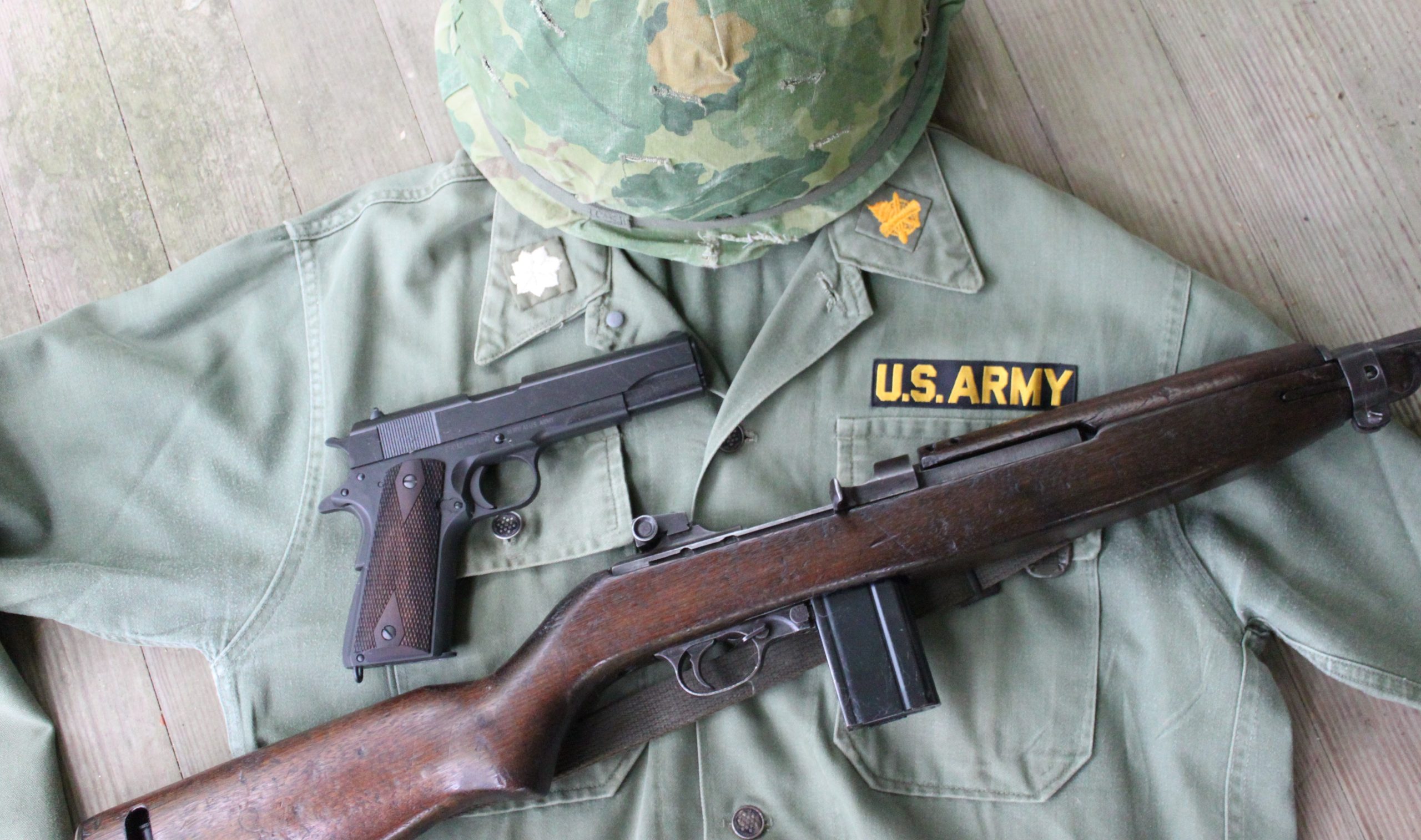
By Jim Dickson | Contributing Writer
During World War II Remington Rand produced over 875,000 M1911A1 pistols compared to 628,000 made by Colt and 335,467 made by Ithaca, the next two largest producers.
Remington Rand made them for the lowest price and their quality was considered second to none. Many consider them to be the finest M1911A1s ever made. The famous gun designer Max Atchisson once said “Typewriter companies make the best guns.” I agree. I have carried a WWII Remington Rand M1911A1 all my adult life and I got another for my wife, Betty, to use.
During WWII the Army’s inspector, Colonel Frank J. Atwood, did an exemplary job insuring top quality. His initials, FJA, can be found as an inspector’s mark on these guns. The Army didn’t stop with just visual inspections though. They would pick a gun at random from a shipment going out and fire 10,000 to 15,000 rounds through it without a malfunction, give the trial gun a cleaning and then return it to the shipment to be sent out to war.
Between 10,000 and 15,000 rounds was nothing for these pistols for they stood out in stark contrast to many of today’s designs which often have a design life of a mere 5,000 rounds. Neither the Army nor Remington Rand was fooling around. These guns had to work no matter what. American lives depended on it.
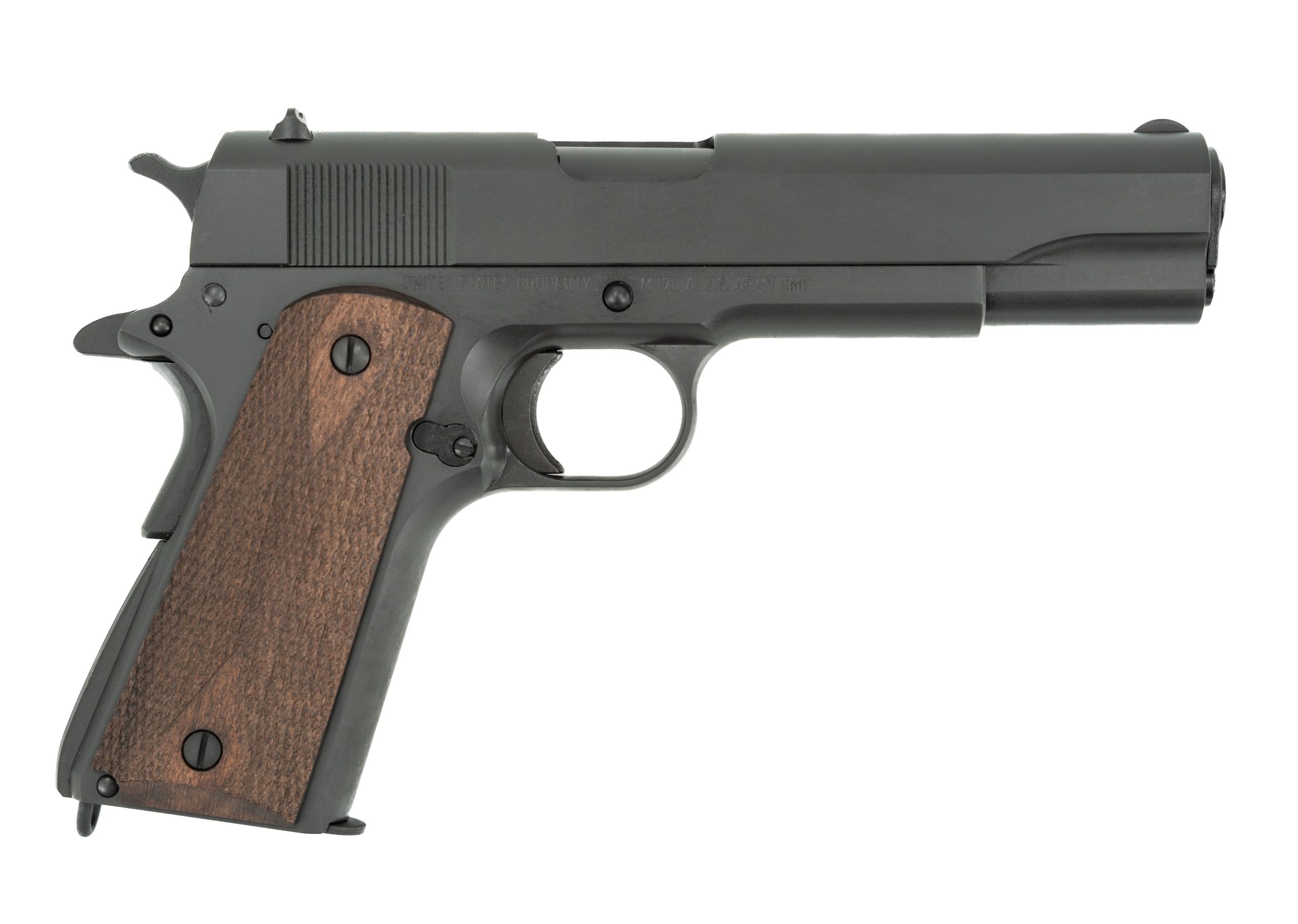
The fact that they succeeded is borne out by the fact that the M1911A1 came out of WWII with the reputation as the most reliable pistol in the world. Most of that reputation was earned by Remington Rand M1911A1’s as they made up the bulk of WWII production. When a .45 auto threw sand out of every joint as it kept firing the odds were that it was a Remington Rand pistol. When a mud-and-ooze covered .45 continued to function just as it had when it was clean, the odds were that it was a Remington Rand. Faithful service earned them faithful users, myself included, who wanted this brand over all others.
Remington Rand understood this design. It was tight where it mattered but not too tight. Equally important, it was loose where it needed to be loose to accommodate the mud, rust, sand, and grit of combat. You can’t keep a gun clean when you are crawling on your belly under fire and bursting grenades and artillery shells are pelting you with the sand and dirt they kick up as they explode. You may go for a long time with no chance to clean your gun and have rust as well. This is where the Remington Rand pistols earned their reputation under fire. It is where lesser guns quit working.
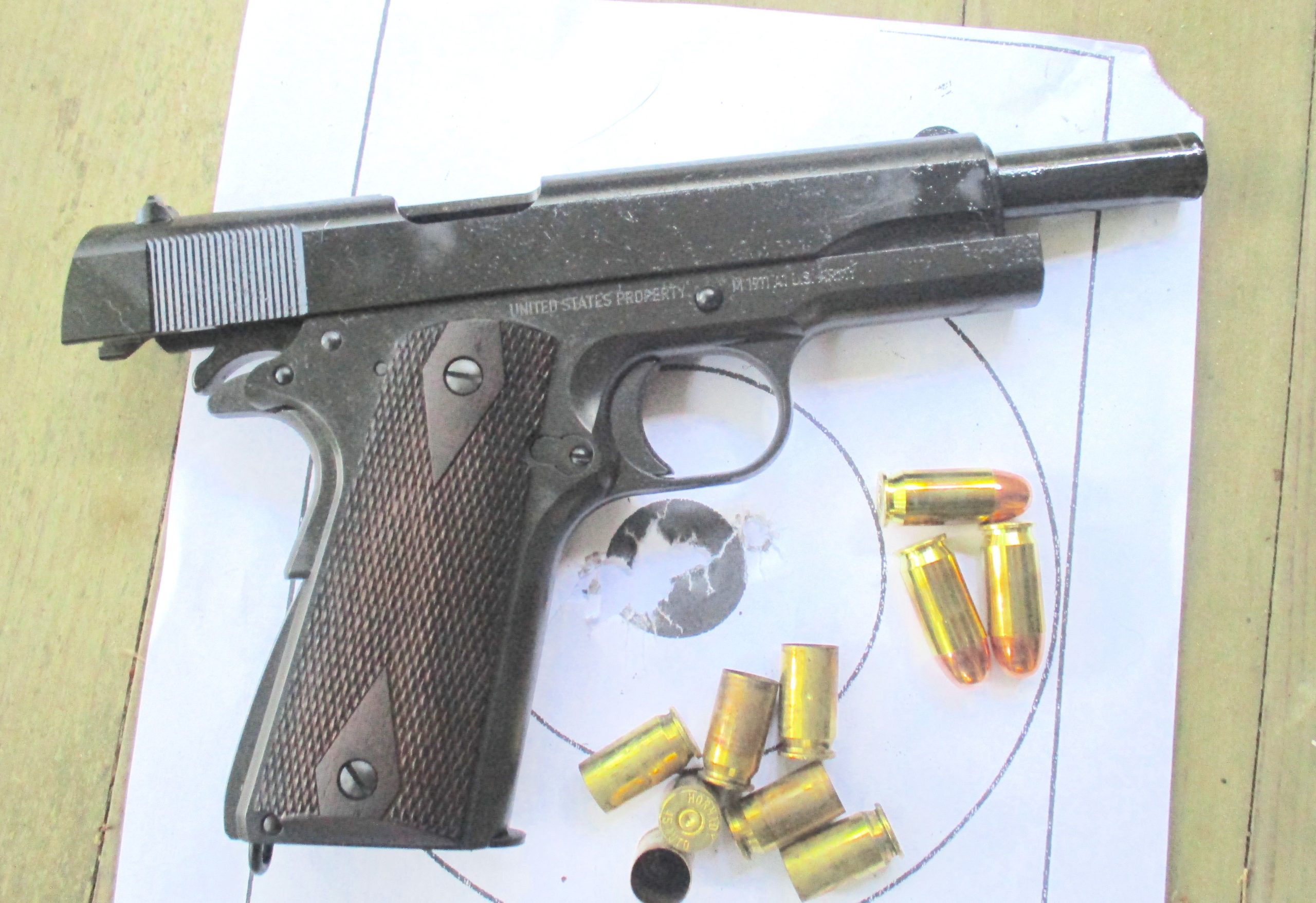
The effectiveness of the M1911A1 in combat cannot be denied. Expert pistol shooters found that the M1911A1 held in one hand was faster on target than a shoulder arm using two hands. Not only that its .45 ACP cartridge had more stopping power.
I have a WWII Army manual which states bluntly that the .45 ACP has more stopping power than the 30-06. These fractions of a second in speed and the increased stopping power often meant the difference between life and death in close quarters combat.
In house-to-house fighting it was unparalleled.
A good example was the story of a lieutenant in the 24th Infantry Division in the WWII Philippine Campaign. This unit saw the heaviest fighting in that campaign. They issued the lieutenant an M1 carbine and a M1911A1 but he normally did all his shooting with the pistol using the carbine only for long range shots.
Unfortunately the post war years were not kind to the firm and in 1955 it was absorbed by UNYSYS Corporation, which later sold off just the name.
While the company was no more, the men devoted to that make of the M1911A1 pistol would not let the Remington Rand die.
The owners of SDS Imports and TISAS U.S.A. are all veterans and they wanted the WWII Remington Rand back. They took an original WWII example and copied it faithfully. They wrote the CNC machine program in the United States then engaged a modern high tech factory in Turkeym, where labor costs are low, to make it.
To insure quality they sent their own quality control expert to the Turkish factory to oversee production. The result was as perfect a reproduction of the WWII sidearm as the 21st Century can make.
Like the originals which cost the government less than its competitors it is at a very low price as the company has passed the savings on labor costs on to the customer resulting in a MSRP of a mere $479.99.
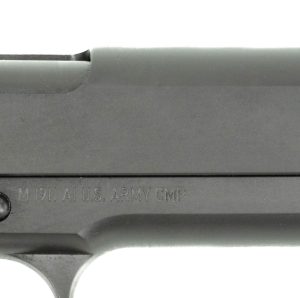
The reproduction is so good that the Civilian Marksmanship Program buys these guns with the CMP logo for sale at their outlets. These guns meet Mil-Specs and interchange parts with the originals. In my experience with the post-war made M1911A1 pistols, most do not, so this is a big deal. If you want the legendary reliability of the military M1911A1 then you had better meet the Mil-Specs and interchange parts with the originals.
The slide and frame take the worse beating in this design and these parts were CNC machined from forgings. Barrels are also hammer forged from 4140 steel, resulting in longer life for them as well. The familiar magnesium phosphate Parkerizing of WWII was applied. All the parts were perfectly fitted and finished with no underlying tool marks.
Trigger pulls break clean at about 4-5 pounds. Fired from a Ransom Rest these guns shoot 2-inch groups at 35-40 yards. Like the WWII guns they are just tight enough where they have to be and loose enough to handle the mud, rust, and sand a combat gun can encounter. I have seen far too many post war commercial versions of the M1911A1 that are tight like a match pistol with no way to handle any crud in the action.
This difference is best shown in the comment of one match shooter who said he regarded his National Match .45 as a precision target shooting tool and not a pistol suitable for anything else. People who think they won’t get their gun dirty are often given a rude awakening in the real world.
I heard many accounts of how during Operation Desert Storm in Iraq men would draw their newly adopted M9 Pistols clean from a holster during a desert sand storm only to have them jam in the sand before they could empty one magazine whereas the men equipped with WWII-era M1911A1 pistols kept firing.
Statistics show that pistols are more effective than long guns in surprise close range bear attacks because the bear may knock the long gun aside whereas the pistol can be drawn and fired effectively even after the bear has you down in the mud and sand. This is a very bad time to find out that your choice of pistol doesn’t work in the dirt.
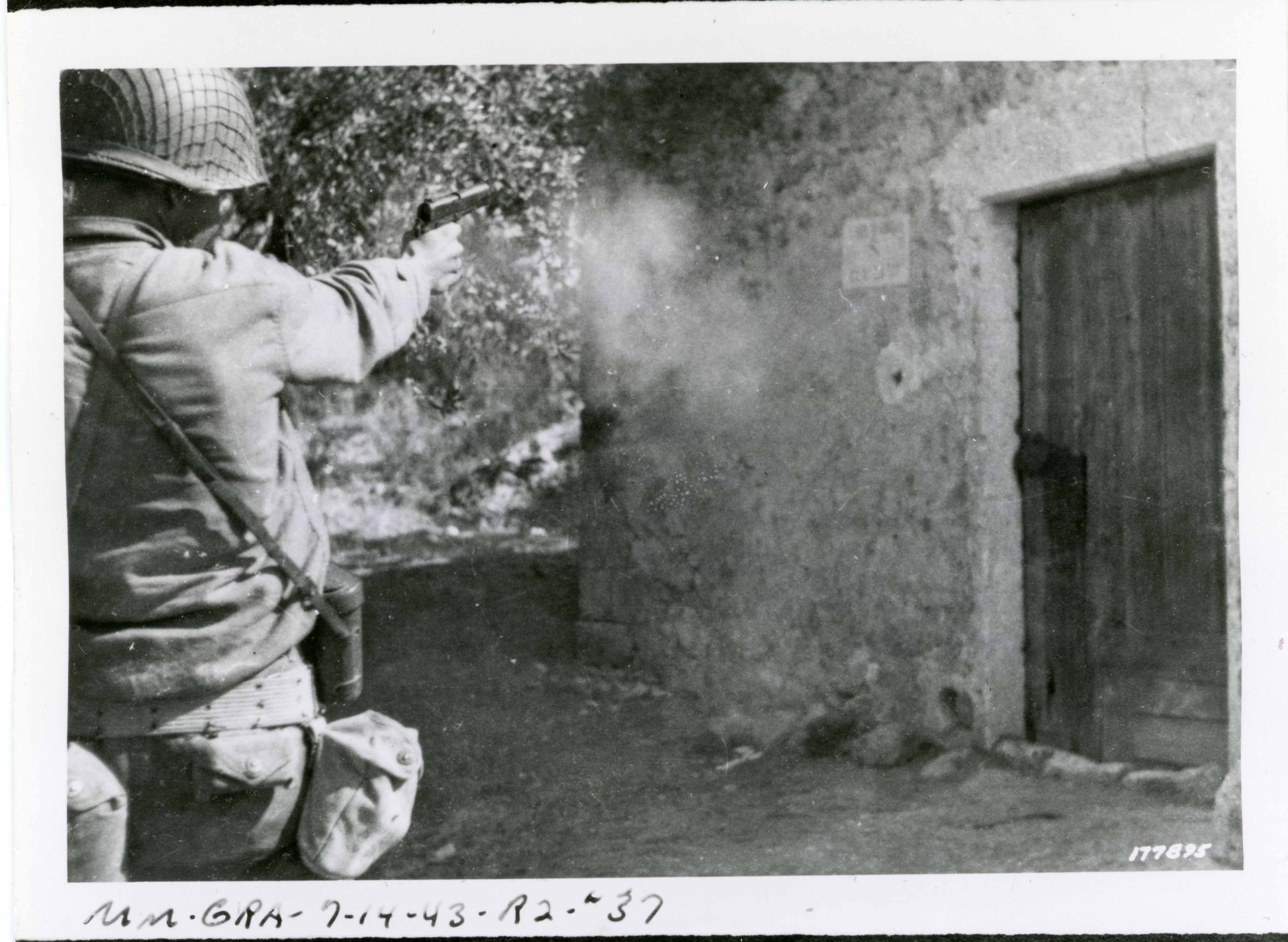
The M1911A1 is one of the few guns like the Johnson M1941 rifle that is really good at throwing sand out of the mechanism as it fires. It also has places inside the gun that it can push dirt aside into where it doesn’t stop the gun from operating. The swinging link not only tilts the barrel to the best position for cartridge feeding it accommodates more dirt without jamming than the sliding ramp of some later pistols. This link also serves as a bridge keying the separate ramps of the barrel and receiver together while positioning the barrel at the best angle for cartridge feeding as the pistol cycles.
The straight-sided .45 ACP round shoves dirt in the chamber out ahead of it into the barrel whereas the tapered case of the 9MM Parabellum jams on dirt in the chamber. The 230-grain bullet at 12,000 PSI chamber pressure gives a heavy operating impulse to the slide evenly rearward without high pressure. In contrast, the 9MM Parabellum has 36,000 PSI chamber pressure and a tapered case with the bullet smaller than the base resulting in a secondary tendency to push the gun forward producing an uneven recoil. Dirt makes the cartridge grip the chamber tightly and 9MM Parabellum guns are thus not reliable when they have dirty or rough chambers. If a bullet is forced back in the case the 9MM chamber pressure can rise up to the low 40,000 PSI range.
The M1911A1 extractor is like the ‘98 Mauser rifle in that the cartridge comes up under the extractor instead of the extractor snapping over the cartridge rim. Like the ‘98 Mauser rifle, the M1911A1 extractor is more reliable and less prone to breakage as a result.
There is only the recoil spring guide and plug in the M1911A1 instead of the “Modern” guide rod which can bend and jam the gun if dropped.
The locking system is far stronger than it has to be. When hot 9MM submachinegun ammo was tried in pistols in South America the only pistols that could handle it were M1911A1’s chambered in 9MM.
Stamped metal parts riveted together are becoming increasingly common in modern designs but the Model 1911A1 has a minimum number of parts and the few that it has are robust and reliable. Unlike many designs the 1911A1 is extremely simple and straightforward to take apart and maintain.
The single column magazine is extremely reliable. I still use some magazines that have been in constant use since WWI though most of my magazines are WWII production. The popular double column single position feed magazines can jam when the cartridges in a partially loaded magazine are jarred out of place by a sudden shock such as occurs when they get dropped. Often the magazine springs are left weaker than they should be to facilitate easy loading as it takes a lot of spring pressure to reliably raise a big column of cartridges.
The safety is in the ideal position for fast use and the pistol is normally carried cocked and locked.
It is worth noting that John Browning thought the manual safety was not really needed with the grip safety and the Shanghai Police proved him right when they pinned the manual safety in the off position and just depended on the grip safety on their Colt hammerless pocket automatics.
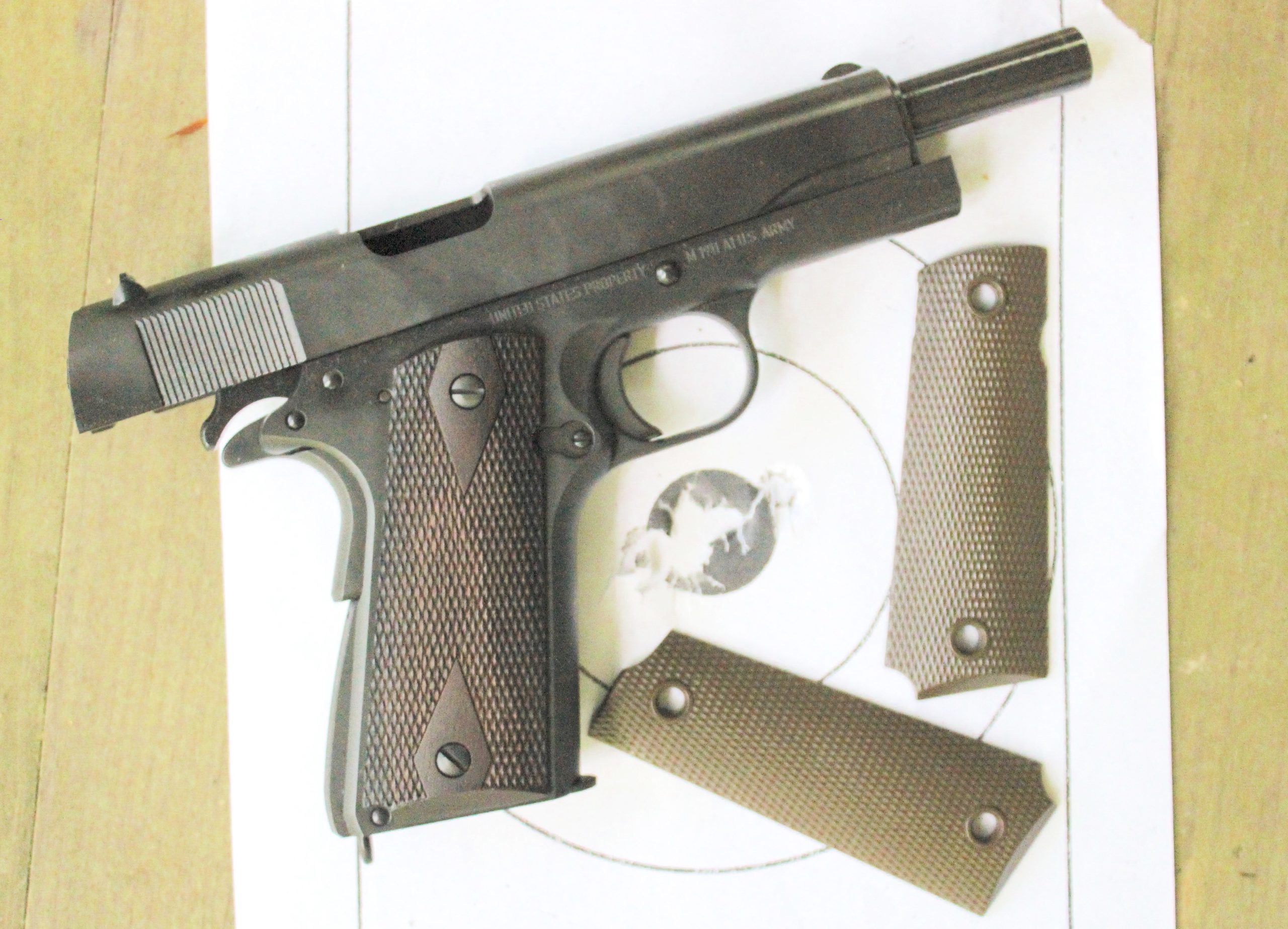
Unlike many of today’s guns that appear morbidly obese for the size of cartridge they fire, the Model 1911A1 is the exact size needed for minimal weight and maximum control in rapid-fire. Its recoil is more like a bounce in the hand instead of a kick.
Far from being a painful experience, my 5-foot-2 wife’s reaction to first firing the M1911A1 was “That’s fun!” She soon would shoot every coin out of the air that you would throw for her. The gun points good and is reasonably accurate. Equally important is the fact that you can comfortably shoot hundreds of rounds at a time without discomfort.
There is just one caveat. Don’t hold the thumb up on the shooting hand or you will get a blister after a mere 200 rounds. Keep the thumb down where it can control the pistol better and you will be fine.
After picking up the test TISAS M1911A1 at Reeves Ace Hardware in Clayton Georgia I commenced firing 1,220 rounds accurately and without a malfunction. The TISAS is still going strong. The cartridge breakdown was:
- 600 rounds of Black Hills 230 grain FMJ, 100 rounds of Black Hills 230 grain HP
- 40 rounds of Steinel 230 grain SCHP (solid copper hollow point), 60 rounds of Steinel 200 grain JHP
- 200 rounds of Privi Partizan 230grain FMJ
- 100 rounds of Remington 230 grain JHP Value pack
- 60 rounds of Hornady 185 grain FTX, 60 rounds of Hornady 185 grain XTP
While I will continue to carry my WWII Remington Rand M1911A1, the TISAS reproduction is as close as possible to the original. I have tried and often reviewed most of the post WWII M1911A1 pistols and I consider the TISAS to be the best M1911A1 made since WWII.



